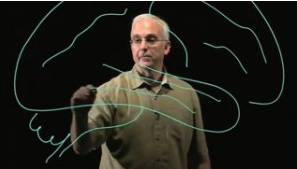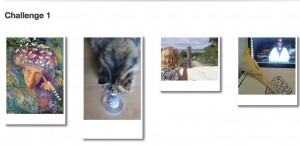What It’s about
Foundational Neuroscience for Perception and Action by Duke University, is a MOOC course that is part of the Neuroscience: Perception, Action and the Brain specialization offered through Coursera. Foundational Neuroscience is a shorter version of Dr. Leonard White’s other Coursera course, Medical Neuroscience. Like its parent course, this course covers the organization and physiology of the human central nervous system and focuses on the basic components of the brain and spinal cord.
Why It’s Awesom e
e
Since its inception earlier this year, Foundational Neuroscience for Perception and Action has grown to over 25,700 participants, 12,000 have been actively involved in the course on a weekly basis. Dr. White deeply cares for his students and understands that a MOOC of this size, or any MOOC for that matter, is another platform where participants over the world can join a learning community and be a part of a learning experience where everyone shares a common interest. Dr. White has implemented a variety of ideas to promote, as well as encourage community engagement.
Enhancing Forum Discussions
One approach Dr. White took involved a series of voluntary forum discussions, serving as bonus points as long as students maintained an average of two posts or comments a week. One issue that arises when adding discussion points as a metric in a grading is how to maintain, as well as determine what constitutes as a substantive contribution. To achieve this, forum participation was funneled into one subforum titled “Let’s Discuss.” Each week, a new topic was posted that was relevant to the topic at hand. Students were initially informed that course staff and community assistants would closely monitor the forums and remove any posts that were generic in nature, such as “I agree,” or “nice job.”
Integrating Social Media in Creative Ways
A very creative approach Dr. White and his team took to encourage community involvement was the use of social media within the course. Social media is a powerful communication tool, and if used e effectively can give an instructor a whole new way of fostering instructor-student interaction. For this course, a series of voluntary challenges were created, each involving a different theme. Students were encouraged to share their images using the hashtag, #GetNeuro, on social media sites Twitter, Instagram, and Google+. At the end of each challenge students would vote on their favorite photo and the winners were posted on the course ‘About You’ page. One challenge asked students to write about neuroscience in a literary form, like
effectively can give an instructor a whole new way of fostering instructor-student interaction. For this course, a series of voluntary challenges were created, each involving a different theme. Students were encouraged to share their images using the hashtag, #GetNeuro, on social media sites Twitter, Instagram, and Google+. At the end of each challenge students would vote on their favorite photo and the winners were posted on the course ‘About You’ page. One challenge asked students to write about neuroscience in a literary form, like  a poem, haiku, or limerick. Another challenge, and of the most popular, challenged students to visualize neuroscience aspects within nature. Among the many student visuals submitted, we received: clouds shaped like a brain, trees that resembled a spinal cord, or in one student’s case, a bush that represented the cerebellum that fell victim to alcohol abuse. Students were able to share their creative insights as they learned about neuroscience and the brain.
a poem, haiku, or limerick. Another challenge, and of the most popular, challenged students to visualize neuroscience aspects within nature. Among the many student visuals submitted, we received: clouds shaped like a brain, trees that resembled a spinal cord, or in one student’s case, a bush that represented the cerebellum that fell victim to alcohol abuse. Students were able to share their creative insights as they learned about neuroscience and the brain.
How CIT Can help
In today’s ever changing educational environment students are more connected than ever before. For many instructors, student engagement is a critical component to their course. While some welcome the change, others may not know where to start. If you are an instructor that values community building and student engagement, or would like to learn more about how you can incorporate social media in your teaching, whether it’s an online course or your on-campus class, then CIT can help. Our CIT staff will welcome the opportunity to meet with instructors to share ideas on how to turn your course into a 21st century course. Please contact CIT if you would like to learn more at learninginnovation@duke.edu.
